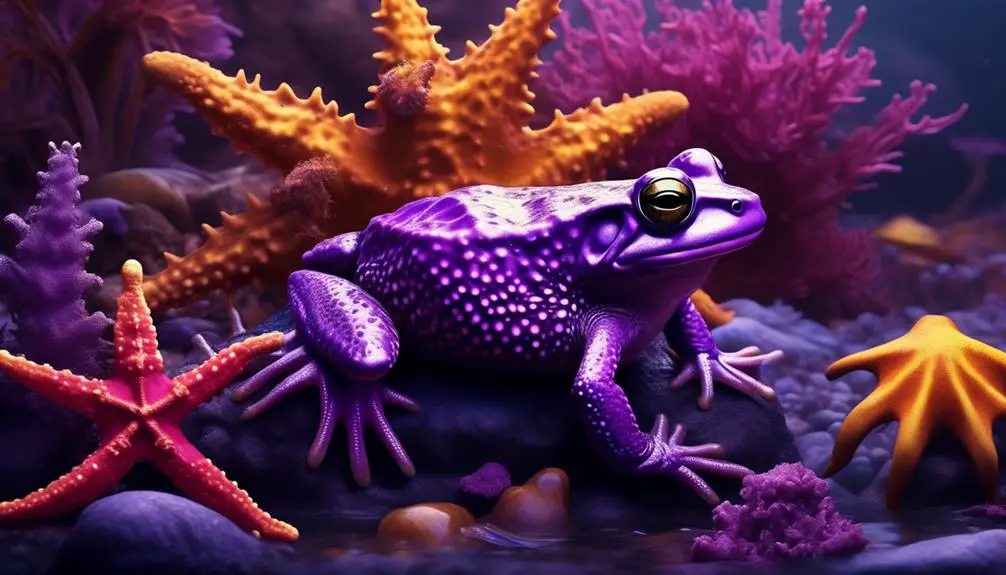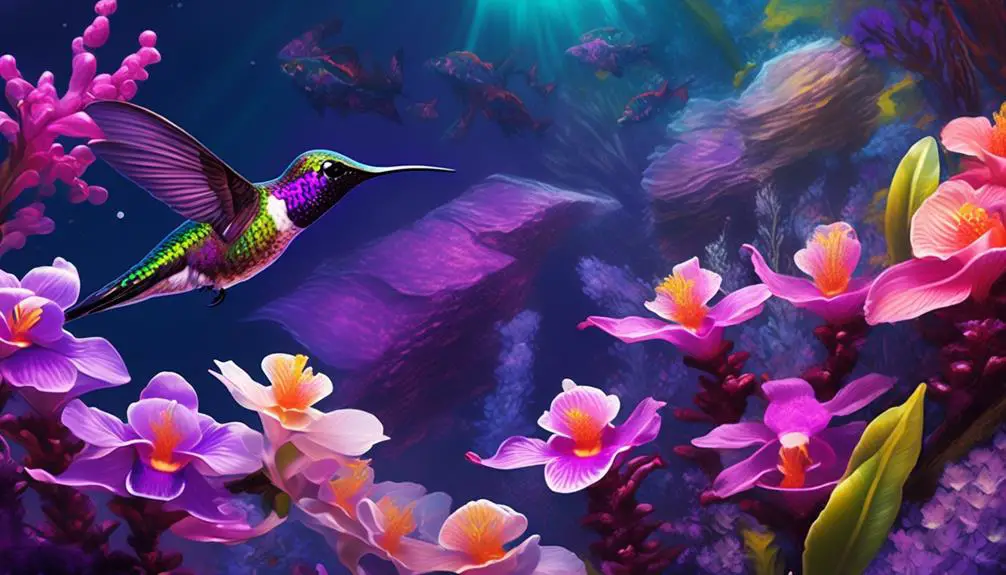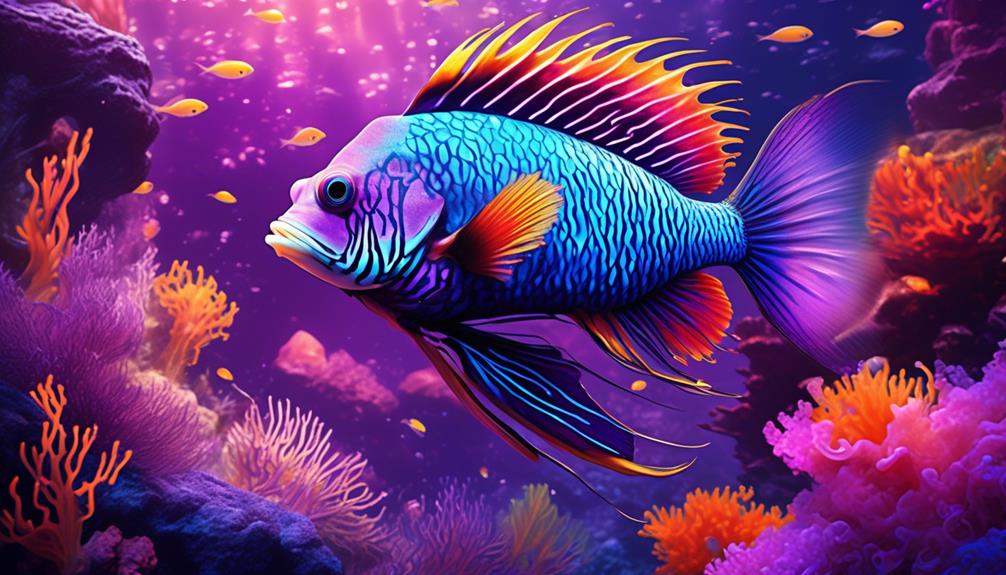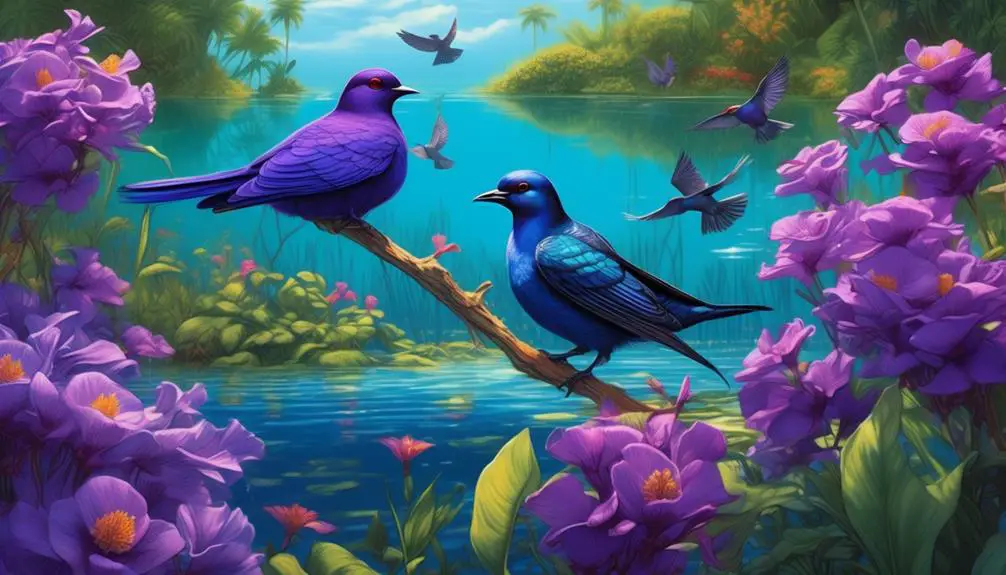Have you ever marveled at the remarkable variety of animals that boast vibrant shades of purple? From the depths of the ocean to the heights of the trees, these creatures captivate our imagination with their stunning displays.
But what exactly are these purple animals, and what makes them so unique? In this exploration, we will uncover the captivating world of purple creatures and discover the fascinating adaptations that set them apart.
Prepare to be amazed as we unveil the secrets of these enchanting beings and embark on a journey that will leave you in awe of nature’s creativity.
Ochre Sea Star and Indian Purple Frog

The Ochre Sea Star and Indian Purple Frog are two unique creatures with distinct purple characteristics.
The Ochre Sea Star, also known as the Pisaster ochraceus, inhabits the North-eastern coast of the Pacific Ocean, ranging from Alaska to Baja in California. This species has been extensively studied due to the prevalence of wasting syndrome affecting starfishes worldwide. These bright colored starfishes are losing their limbs and turning into white debris, resulting in a mass reduction of the Ochre Sea Star population. One intriguing feature of this sea star is the release of a white gooey and slimy secretion during limb loss.
On the other hand, the Indian Purple Frog, or Nasikabatrachus sahyadrensis, is endemic to the Western Ghats of India. With its dark purple to greyish color, elongated snout, and muscular forelimbs, this frog is specialized for burrowing. However, due to its timid nature and elusive behavior, it’s difficult to find in the wild. Fully mature Indian Purple Frogs can grow up to seven centimeters in length, making them a fascinating sight to behold.
Violet-Backed Starling and Purple Honeycreeper

The mesmerizing plumage of the violet-backed starling and the brightly colored feathers of the purple honeycreeper make them standout avian species in their respective habitats. The violet-backed starling, native to the sub-Saharan region, is distinguished by its violet-colored plumage on its back and wings. The rest of its body is covered with white feathers, creating a striking contrast. This small bird, growing no more than seventeen centimeters in size, is usually found on higher branches of trees, rarely on the ground. On the other hand, the purple honeycreeper is native to the forests of South America, especially the Amazon Basin. It is known for its brightly colored feathers that adorn its body. With a slightly hooked beak for catching insects, this omnivorous species can survive on fruits, seeds, nectar, and insects. The purple honeycreeper tends to stay in groups with other honeycreepers, adding to the vibrancy of its surroundings.
| Violet-Backed Starling | Purple Honeycreeper | |
|---|---|---|
| Habitat | Sub-Saharan region | Forests of South America, especially the Amazon Basin |
| Features | Violet-colored plumage on back and wings | Brightly colored feathers |
| Size | Small, growing no more than 17 cm | Small |
| Behavior | Usually found on higher branches of trees, rarely on the ground | Tends to stay in groups with other honeycreepers |
Costas Hummingbird and Orchid Dottyback

You will now learn about two fascinating creatures, the Costas Hummingbird and the Orchid Dottyback.
The Costas Hummingbird, found in the Sonoran Desert of Arizona and California, is a small bird known for its purple feathers concentrated around the neck, resembling an overgrown mustache. These purple feathers play a crucial role in courtship behavior, as they’re used to attract females. Female Costas Hummingbirds, on the other hand, have green and white feathers and lack the purple plumage.
Moving on to the Orchid Dottyback, it’s a beautiful fish with a vibrant purple coloration. Native to the Red Sea, this fish adds a touch of beauty to aquariums. The Orchid Dottyback is a reclusive species often found near reefs and rock shelters. In terms of diet, it requires meaty fish food such as shrimp brine and krill. In the aquarium, it’s a flitting creature, frequently darting in and out of structures.
Both the Costas Hummingbird and the Orchid Dottyback exhibit captivating purple colors, making them truly remarkable creatures to observe in their respective habitats.
Purple Firefish and Crowned Woodnymph

Exploring the world of purple creatures, we now turn our attention to the Purple Firefish and the Crowned Woodnymph.
The Purple Firefish, scientifically known as Nemateleotris decora, is a small marine fish that boasts a striking purple body with a distinctive dorsal fin. This gentle and non-aggressive fish is highly sought after by aquarium enthusiasts for its vibrant coloration. Native to the waters of the Indo-West Pacific, the Purple Firefish prefers to inhabit areas near reefs and rock shelters. In order to thrive in captivity, it requires similar pH levels to seawater in the aquarium.
Moving on to the Crowned Woodnymph, also known as Thalurania colombica, we encounter a small bird with a captivating appearance. The Crowned Woodnymph displays bright purple feathers on its head and wings, creating a beautiful contrast with its green neck and breast plumage. Notably, the Colombian Violet-crowned woodnymph showcases almost its entire body covered in violet feathers. Female individuals of this species possess dull black, green-mottled feathers with blue-black tails. Found in certain regions of Colombia, this avian creature adds a touch of elegance to its surroundings. With its scientific name reflecting its regal appearance, the Crowned Woodnymph is a species that certainly lives up to its name.
Purple Martin and Purple Gallinule

Have you ever wondered about the fascinating purple birds known as the Purple Martin and the Purple Gallinule? These birds are not only visually stunning but also possess unique characteristics that make them stand out in the avian world.
| Bird | Appearance | Habitat |
|---|---|---|
| Purple Martin | Glossy purple feathers on back and wings | Nests in houses or condominiums |
| Purple Gallinule | Vibrant purple plumage | Found in wetlands |
The Purple Martin, with its glossy purple feathers, is a migratory bird that often nests in houses or condominiums. The male Purple Martin displays a distinctive purple coloration on its back and wings, while the female has brown and mottled feathers. These birds are skilled foragers, catching food in mid-flight. If you are lucky to have Purple Martins nesting in your home, you can observe their vibrant purple plumage up close.
On the other hand, the Purple Gallinule is a bird species with vibrant purple plumage. This bird can be found in wetlands, where its purple feathers blend in with the surrounding vegetation. The Purple Gallinule’s striking appearance makes it a unique sight to behold in its natural habitat.
Both the Purple Martin and the Purple Gallinule showcase the beauty and diversity of purple birds in the animal kingdom. Their vibrant plumage adds a splash of color to their surroundings and captivates the observer’s attention.

Erzsebet Frey (Eli Frey) is an ecologist and online entrepreneur with a Master of Science in Ecology from the University of Belgrade. Originally from Serbia, she has lived in Sri Lanka since 2017. Eli has worked internationally in countries like Oman, Brazil, Germany, and Sri Lanka. In 2018, she expanded into SEO and blogging, completing courses from UC Davis and Edinburgh. Eli has founded multiple websites focused on biology, ecology, environmental science, sustainable and simple living, and outdoor activities. She enjoys creating nature and simple living videos on YouTube and participates in speleology, diving, and hiking.
🌿 Explore the Wild Side!
Discover eBooks, guides, templates and stylish wildlife-themed T-shirts, notebooks, scrunchies, bandanas, and tote bags. Perfect for nature lovers and wildlife enthusiasts!
Visit My Shop →
